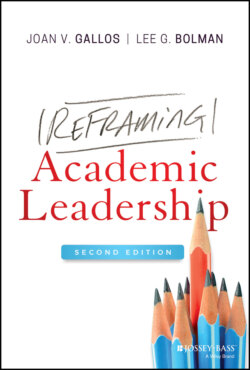Читать книгу Reframing Academic Leadership - Lee G. Bolman - Страница 25
Anticipate and Practice the Future: Data Gathering and Scenario Building
ОглавлениеThe future is hard to anticipate, which is why it is vital that we try. A powerful way for academic leaders to clarify their thinking and to test assumptions is to develop their own scenarios or stories about how specific leadership choices might play out over time. Scenario building has been used in industry for a long time – a way to “rehearse the future” and anticipate the impact of a host of forces. There's plenty of advice out there on how to build scenarios if you want a structured method (e.g., de Geus, 1991; Ratcliffe, 2000; Schwartz, 1991; van der Heijden, 2005). Strategic planners sometimes approach the process as though a science, but it can also be a more informal and playful process of looking ahead (Heracleous & Jacobs, 2008). If you craft alternative stories for yourself about possible futures based on different choices and assumptions, your sagas may identify interesting plot twists, winners, and losers – things you'd want to know before facing them in real time.
Take Nancy Turner's case. Her colleagues suggested a number of different paths. She might pick a few and construct alternative scenarios about each. Taking on the role of a novelist or playwright, she could, for example, envision one story where she started with creating a vision, and another where she started by getting the right team in place. Playing each out, she might find that one seems much more promising, that her two paths converge eventually, or that she can see ways to do both at the same time. In any event, the process of projecting will help her to think and to communicate more clearly about possible futures for her college. She will be better able to predict and to prepare for the twists and turns of different paths going forward because it will be easier to recognize when the story is or is not going as anticipated. She will also lessen the risk of losing her way – or her footing – in the face of unanticipated challenges.
Many institutions turned to scenario planning as a way to chart an uncertain future as they struggled to make plans for Fall 2020 in the midst of the Covid‐19 pandemic. Harvard announced in June that most undergraduate instruction in the Fall would be online, but sketched three possible “paths” for the presence of students on campus: low‐density with very few undergraduates on campus, medium‐density with 30 to 40 percent, and high‐density where everyone would be invited back. The university then worked to tease out the implications of each scenario before making a final decision.
